Topics
Category
Era
Carlos Avery Game Farm
In the mid-twentieth century, Anoka County's Carlos Avery Game Farm helped to build populations of dwindling game bird species, such as the bob white quail, chukar partridge, and ring-necked pheasant. A National Register-listed historic district since 1991, it is now part of the nearly 25,000-acre Carlos Avery Wildlife Management Area (WMA) and has become a reserve for deer, waterfowl, and other woodland animals and birds.
The Minnesota Department of Conservation (MDC, later the Department of Natural Resources) bought 8478.73 acres of land from the Crex Carpet Company in 1933 for a wildlife refuge. The land, which the company had used to grow a type of wire grass used in rug manufacturing, covered portions of Anoka and Chisago counties and included swamp land, three lakes, and woods. It was named the Carlos Avery Game Refuge in honor of Minnesota's first commissioner of conservation.
The superintendent of the MDC, Frank Blair, saw the land as the perfect location for a game-bird breeding program. He worked with Walter D. MacLieth, an architect with the Division of Game and Fish, to design a modern facility for raising bob white quail and chukar partridge within the refuge.
The Works Progress Administration (WPA) agreed to build it. Construction began in January 1936 for the first structures on the property, a barn and a storage building. A house for the gamekeeper was completed later that summer. More buildings followed in 1937, including a heating plant, power plant, garage, incubation building, and superintendent's house. MacLieth designed each building in a Colonial style, with white-painted clapboard siding and green-stained wood shingles. Later additions included several brood shelters, a pump house, and an iron flagpole with a limestone base.
Governor Elmer Benson dedicated the Carlos Avery Game Farm on October 16, 1938. The WPA covered 85 percent of the $40,887 cost of construction.
In 1937, the game farm began to raise 700 chukar eggs and 200 pairs of bob white quail as part of a bird-species propagation program. The first year's yield resulted in 2,879 quail, including 1000 kept for breeding, and 469 partridges. By 1940, the yield had increased to 22,664 quail and 19,449 partridges.
The MDC stopped raising partridges at the farm in 1947, but the bobwhite quail program continued until 1955. A total of 150,000 quail were released into the wild before that program ended.
A shortage of pheasants prompted the creation of a new program in 1947 to produce ring-necked pheasants. Farmers, members of sportsmen's clubs, and others received day-old pheasant chicks to raise until they reached six weeks of age and could be released. The farm produced up to 100,000 pheasants each year, though many chicks did not survive.
The MDC began to rebuild Minnesota's Canada goose population in the late 1950s. In the 1970s, the focus of wildlife management shifted from propagation of species to improving habitat and providing a food supply. The Department of Natural Resources (DNR) phased out the goose program in the early 1970s and the pheasant program in 1981.
On August 9, 1991, the National Park Service (NPS) added the Carlos Avery Game Farm Historic District to the National Register of Historic Places. The listing recognized the unique architecture of the eleven remaining structures. The NPS recognized its significance as "one of the largest and best equipped game farms in the nation" when it opened in 1937 and its value as an early example of wildlife management in Minnesota.
Approximately every other year, the DNR adds carefully reviewed land to the Carlos Avery Wildlife Management Area. It allows birdwatching, hunting, angling, and trapping (by special permit). In 2018, the WMA exceeded 24,600 acres. 4,500 acres are designated as a wildlife sanctuary, with no hunting or public access allowed. Staff work to maintain buildings, roads, and grounds, carefully review potential land purchases, and carry out controlled burns. They grow crops of corn, rye, and root vegetables to feed deer and other woodland animals, birds, and waterfowl.
Bibliography
Agency History Record
Minnesota Department of Conservation
State Agency Histories, Minnesota Historical Society, St. Paul
Description: A brief history of the Department of Conservation from its establishment in 1931 to its transformation into the Department of Natural Resources in 1971.
Avery, Carlos. “The Preservation of Wildlife.” Rotarian, May 1921.
“Carlos Avery Game Farm Dedicated in Anoka County Last Sunday." Anoka Herald, October 19, 1938.
Carlos Avery Game Farm. National Register of Historic Places Registration Form, August 1991, State Historic Preservation Office, Minnesota Historical Society, St. Paul
http://www.mnhs.org/preserve/nrhp/nomination/91000977.pdf
Minnesota Department of Natural Resources. Carlos Avery profile. http://www.dnr.state.mn.us/wmas/detail_report.html?map=COMPASS_MAPFILE&mode=itemquery&qlayer=bdry_adwma2py3_query&qitem=uniqueid&qstring=WMA0900101
Related Resources
Primary
Box 107.H.12.1B
Miscellaneous Records, 1920–1966
Minnesota Department of Conservation
State Government Records Collection, Minnesota Historical Society, St. Paul
http://www2.mnhs.org/library/findaids/cons027.pdf
Description: Reports, correspondence, maps, and other materials, including Game and Fish Division plans and statistics, including construction costs on the Carlos Avery Game Refuge.
Carlos Avery Wildlife Management Area Master Plan, 1977–1986. Minnesota Department of Natural Resources, Division of Fish and Wildlife. St. Paul, MN: The Department, 1977.
G4141 .D5 1958 .M5
Map Collection, Minnesota Historical Society, St. Paul
Description: State-owned Wildlife Management Areas and Public Hunting Grounds (Includes Wetland Areas). [Minnesota]: State of Minnesota, Department of Conservation, Division of Game and Fish, Bureau of Game, 1958.
G4141 .D5 1976 .M55
Map Collection, Minnesota Historical Society, St. Paul
Description: Minnesota Wildlife Lands, June 30, 1976. [St. Paul]: Minnesota Department of Natural Resources, Division of Fish and Wildlife, 1976.
Minnesota Conservation Expansion Program, Progress Report; Habitat Improvement: Deer, Upland Game Birds, Waterfowl, Fish. St. Paul: Minnesota Department of Natural Resources, Division of Game and Fish, 1971.
Minnesota Department of Natural Resources. Wildlife Management Area, Long-Range Acquisition Plan; Appendix B, Detailed Acquisition Listing. St. Paul: The Department.
Secondary
Kallman, Harmon, ed. Restoring America's Wildlife, 1937–1987: the First 50 Years of the Federal Aid in Wildlife Restoration (Pittman-Robertson) Act. Washington, DC: US Department of the Interior, Fish and Wildlife Service, 1987.
Moyle, John B. Fish and Wildlife in Minnesota: Fish and Game Animals, Their Conservation and Management: Together with Some Suggested Demonstrations of Wildlife Conservation Principles. St. Paul: Minnesota Department of Conservation, Division of Game and Fish, 1962.
Web
Audubon Society. Important Bird Areas: Carlos Avery, Minnesota.
http://www.audubon.org/important-bird-areas/carlos-avery
King, Maria. “Anoka County History: Carlos Avery.” ABC Newspapers, November 26, 2016. https://web.archive.org/web/20161128134534/http://abcnewspapers.com/2016/11/26/anoka-county-history-carlos-avery/
State Parks. Carlos Avery. http://www.stateparks.com/carlos_avery_state_wildlife_management_area_in_minnesota.html
Wildlife Viewing Areas. Carlos Avery.
http://wildlifeviewingareas.com/wv-app/parkdetail.aspx?parkid=470
Related Images
Anoka Conservation District photograph of Norway Pine seedlings in their second year of growth in the Department of Natural Resource Nursery at Carlos Avery before lifting for sale to forestry cooperators. Julius Edwards, soil conservationist on left; Alex Gurtin, district forester, on right. Photograph was taken June 28, 1972, by USDA-Soil Conservation Service SCS-CART-164 Rev.7.90.
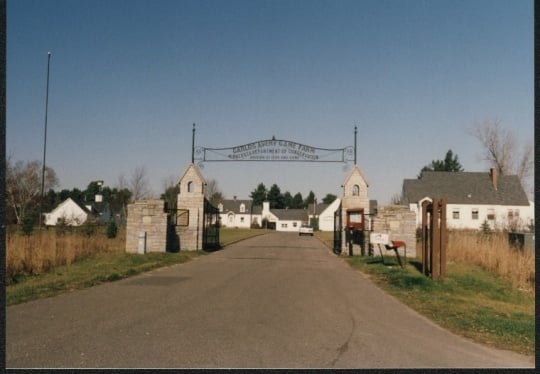
Entrance to the Carlos Avery Game Farm
Holding Location
Articles
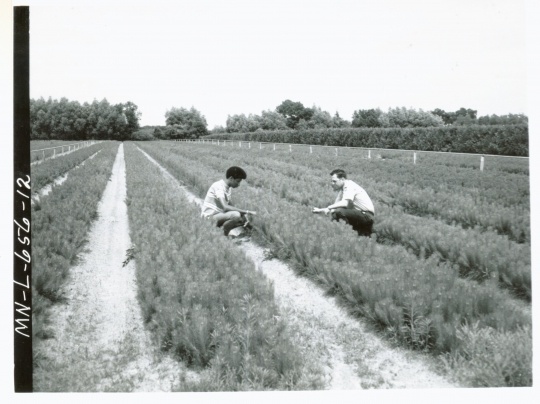
Tending Norway Pine seedlings at Carlos Avery Game Farm
Anoka Conservation District photograph of Norway Pine seedlings in their second year of growth in the Department of Natural Resource Nursery at Carlos Avery before lifting for sale to forestry cooperators. Julius Edwards, soil conservationist on left; Alex Gurtin, district forester, on right. Photograph was taken June 28, 1972, by USDA-Soil Conservation Service SCS-CART-164 Rev.7.90.
Public domain
Holding Location
Articles
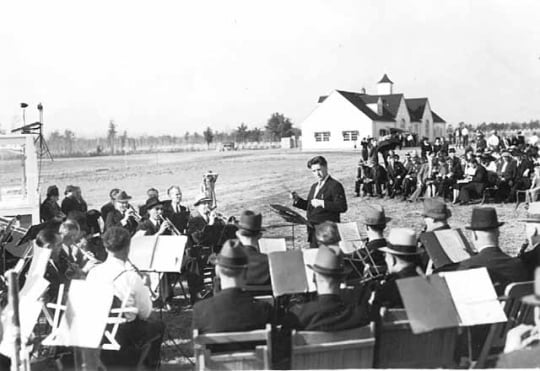
Carlos Avery Game Farm dedication event
Holding Location
Articles
More Information
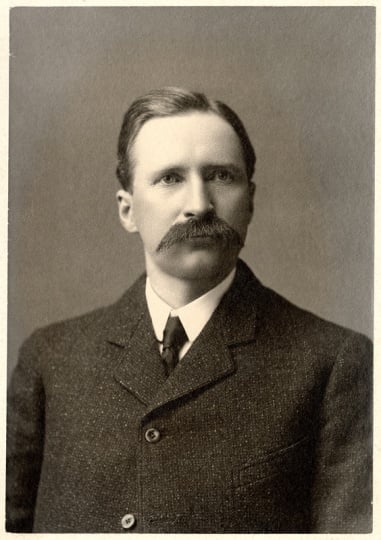
Carlos Avery
Holding Location
Articles
More Information
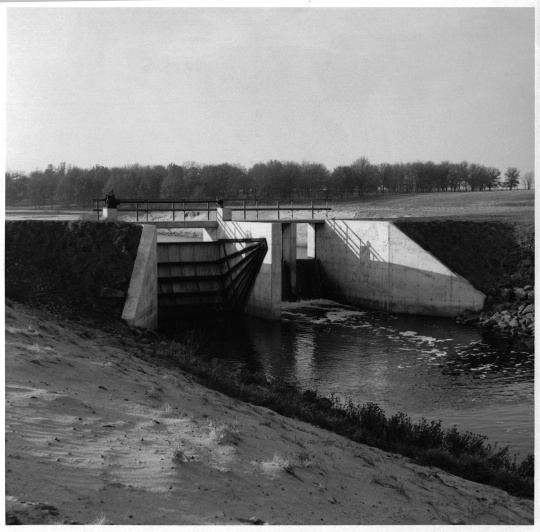
Control structure for waterfowl impoundment
Holding Location
Articles
More Information
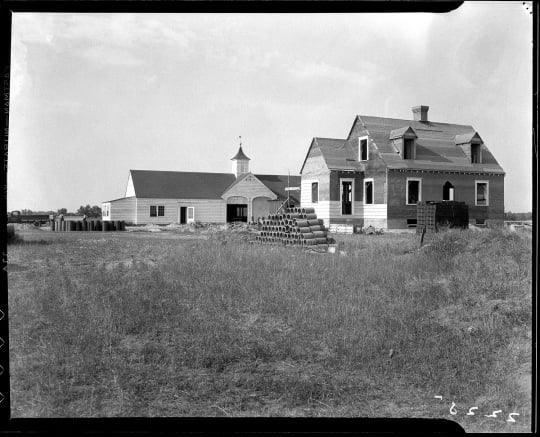
Barn and gamekeeper’s house at Carlos Avery Game Farm
Holding Location
Articles
More Information
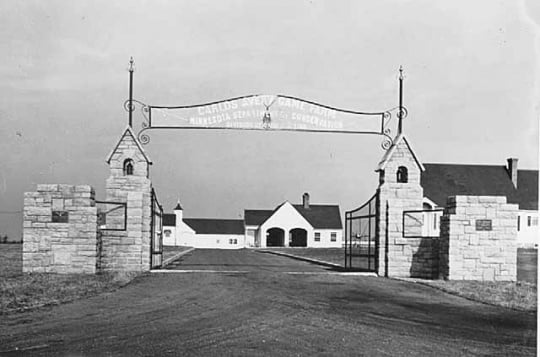
Entrance to the Carlos Avery Game Farm
Holding Location
Articles
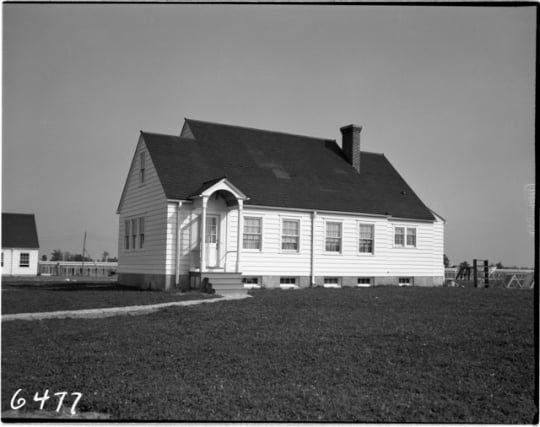
Superintendent’s house at Carlos Avery Game Farm
Holding Location
Articles
More Information
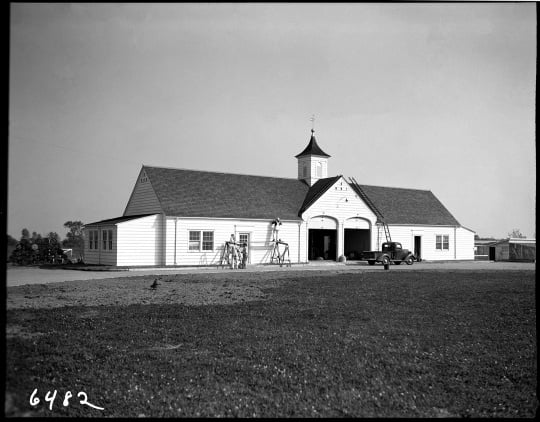
Barn, feed, and storage building at Carlos Avery Game Farm
Holding Location
Articles
More Information
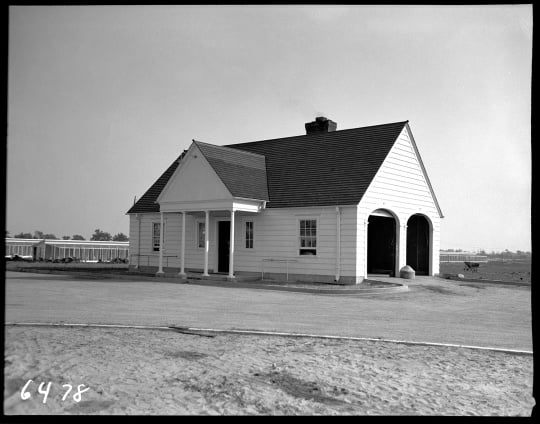
Power and heating plant, Carlos Avery Game Farm, 1938.
Holding Location
Articles
More Information
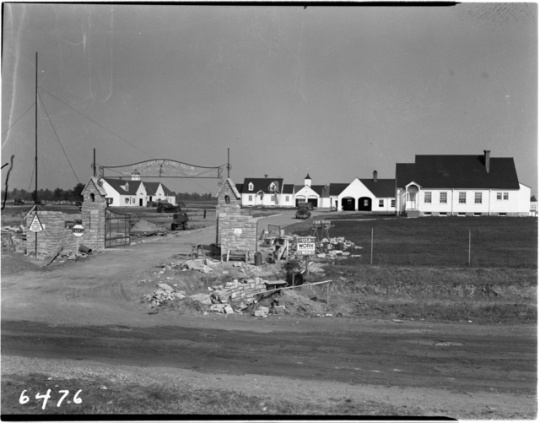
Carlos Avery Game Farm
Holding Location
Articles
More Information
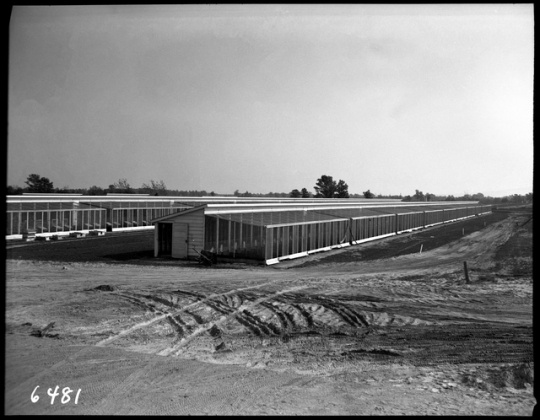
Rearing pens at the Carlos Avery Game Farm
Holding Location
Articles
More Information
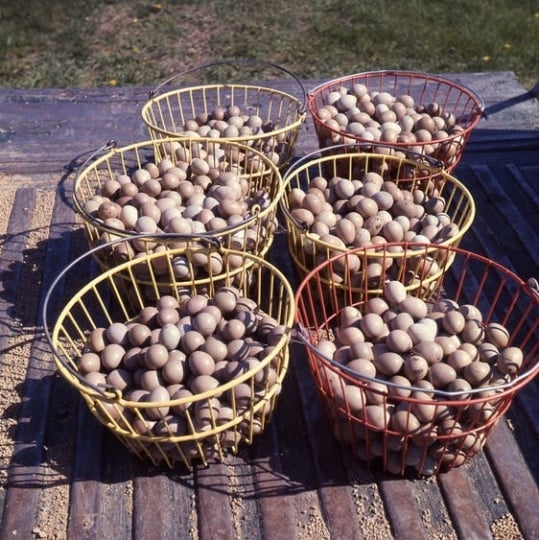
Baskets of pheasant eggs at the Carlos Avery Wildlife Management Area
Baskets of pheasant eggs, Carlos Avery Wildlife Management Area, 1970. Photograph by Minnesota Department of Natural Resources. Printed in the Minneapolis Star Tribune article "Pheasants, Long-ago Introduced to Minnesota, Now a Cherished Gamebird" (October 10, 2014).
Articles
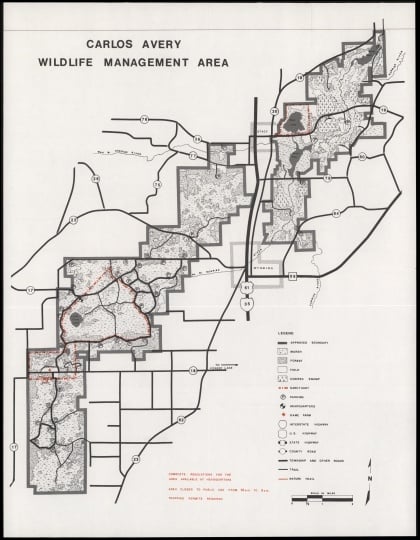
Map of the Carlos Avery Wildlife Management Area
Holding Location
Articles
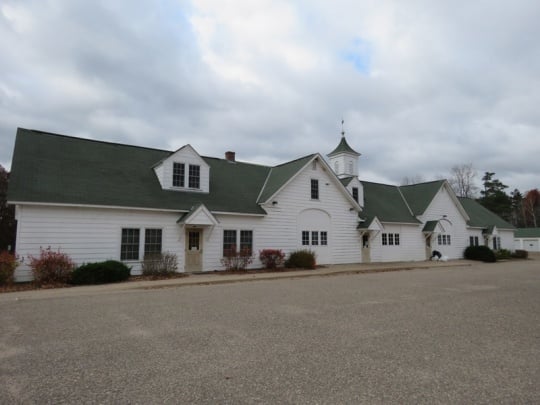
Carlos Avery Game Farm’s incubation building
Holding Location
Articles
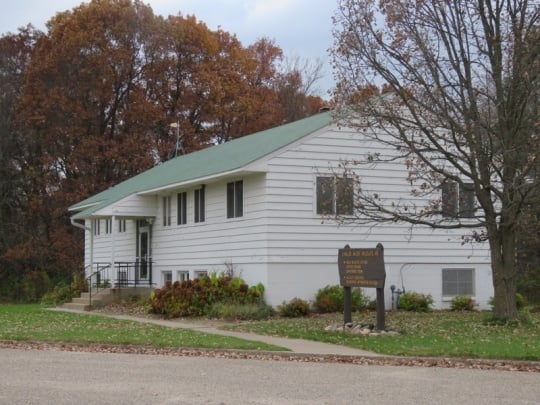
Carlos Avery Game Farm’s field station and laboratory.
Holding Location
Articles
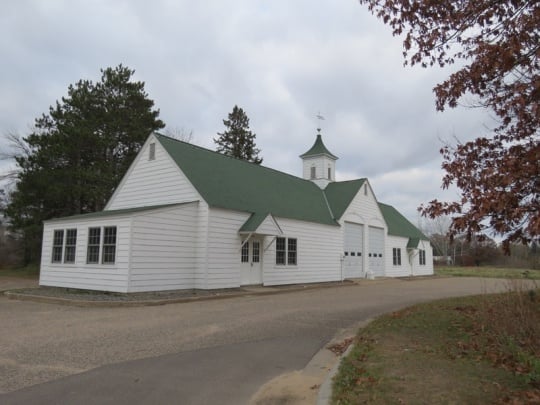
Barn on the Carlos Avery Game Farm
Holding Location
Articles
Related Articles
Turning Point
In 1970, wildlife management philosophy shifts away from the propagation of species on a large scale toward habitat preservation and improvement, leading to a change in programming at the Carlos Avery Game Farm.
Chronology
1931
1933
January 1936
1937
July 15, 1937
October 16, 1939
1947
Late 1950s
1955
1959
1969
1971
1981
August 9, 1991
Bibliography
Agency History Record
Minnesota Department of Conservation
State Agency Histories, Minnesota Historical Society, St. Paul
Description: A brief history of the Department of Conservation from its establishment in 1931 to its transformation into the Department of Natural Resources in 1971.
Avery, Carlos. “The Preservation of Wildlife.” Rotarian, May 1921.
“Carlos Avery Game Farm Dedicated in Anoka County Last Sunday." Anoka Herald, October 19, 1938.
Carlos Avery Game Farm. National Register of Historic Places Registration Form, August 1991, State Historic Preservation Office, Minnesota Historical Society, St. Paul
http://www.mnhs.org/preserve/nrhp/nomination/91000977.pdf
Minnesota Department of Natural Resources. Carlos Avery profile. http://www.dnr.state.mn.us/wmas/detail_report.html?map=COMPASS_MAPFILE&mode=itemquery&qlayer=bdry_adwma2py3_query&qitem=uniqueid&qstring=WMA0900101
Related Resources
Primary
Box 107.H.12.1B
Miscellaneous Records, 1920–1966
Minnesota Department of Conservation
State Government Records Collection, Minnesota Historical Society, St. Paul
http://www2.mnhs.org/library/findaids/cons027.pdf
Description: Reports, correspondence, maps, and other materials, including Game and Fish Division plans and statistics, including construction costs on the Carlos Avery Game Refuge.
Carlos Avery Wildlife Management Area Master Plan, 1977–1986. Minnesota Department of Natural Resources, Division of Fish and Wildlife. St. Paul, MN: The Department, 1977.
G4141 .D5 1958 .M5
Map Collection, Minnesota Historical Society, St. Paul
Description: State-owned Wildlife Management Areas and Public Hunting Grounds (Includes Wetland Areas). [Minnesota]: State of Minnesota, Department of Conservation, Division of Game and Fish, Bureau of Game, 1958.
G4141 .D5 1976 .M55
Map Collection, Minnesota Historical Society, St. Paul
Description: Minnesota Wildlife Lands, June 30, 1976. [St. Paul]: Minnesota Department of Natural Resources, Division of Fish and Wildlife, 1976.
Minnesota Conservation Expansion Program, Progress Report; Habitat Improvement: Deer, Upland Game Birds, Waterfowl, Fish. St. Paul: Minnesota Department of Natural Resources, Division of Game and Fish, 1971.
Minnesota Department of Natural Resources. Wildlife Management Area, Long-Range Acquisition Plan; Appendix B, Detailed Acquisition Listing. St. Paul: The Department.
Secondary
Kallman, Harmon, ed. Restoring America's Wildlife, 1937–1987: the First 50 Years of the Federal Aid in Wildlife Restoration (Pittman-Robertson) Act. Washington, DC: US Department of the Interior, Fish and Wildlife Service, 1987.
Moyle, John B. Fish and Wildlife in Minnesota: Fish and Game Animals, Their Conservation and Management: Together with Some Suggested Demonstrations of Wildlife Conservation Principles. St. Paul: Minnesota Department of Conservation, Division of Game and Fish, 1962.
Web
Audubon Society. Important Bird Areas: Carlos Avery, Minnesota.
http://www.audubon.org/important-bird-areas/carlos-avery
King, Maria. “Anoka County History: Carlos Avery.” ABC Newspapers, November 26, 2016. https://web.archive.org/web/20161128134534/http://abcnewspapers.com/2016/11/26/anoka-county-history-carlos-avery/
State Parks. Carlos Avery. http://www.stateparks.com/carlos_avery_state_wildlife_management_area_in_minnesota.html
Wildlife Viewing Areas. Carlos Avery.
http://wildlifeviewingareas.com/wv-app/parkdetail.aspx?parkid=470


















